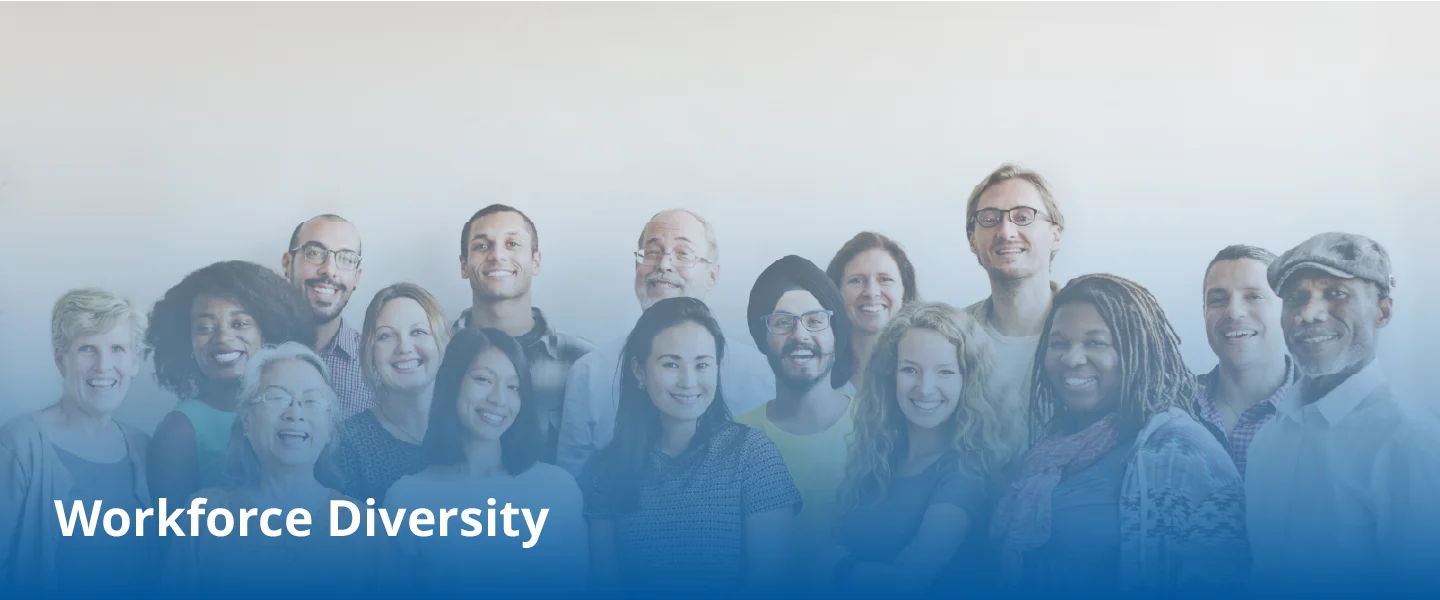Diversity and inclusion are essential components of a thriving workplace. Companies that actively embrace DE&I benefit from a wide range of perspectives, experiences, and talents, leading to innovation, better decision-making, and a more positive work environment for all employees, an environment where individuals from various backgrounds, cultures, and walks of life contribute their unique perspectives, skillsets, and experiences. According to Great Place to Work, one of the benefits of diversity in the workplace is that is contributes to greater employee satisfaction and retention. Let’s explore how you can improve diversity in your organization to realize all these benefits.
Foster Diversity and Inclusion in the Workplace
Creating a truly inclusive workplace doesn’t happen overnight. It requires deliberate effort, commitment, and a set of well-planned strategies. But the effort will pay off. The HR Digest reveals that prioritizing DE&I helps companies to “perform better financially, earn higher cash flow per employee, and have more productive teams.” So, how can your workplace truly embrace diversity and inclusion?
Effective Strategies for Enhancing Diversity
Here are some effective ways to foster diversity within your organization:
1. Promote a Culture of Respect and Open Communication
Encourage open dialogue where all employees feel comfortable expressing their thoughts, concerns, and ideas. Respect for diverse perspectives cultivates an environment where everyone feels valued and heard.
2. Implement Diversity Training Programs
Equip employees and leaders with the knowledge and skills to navigate diverse work settings effectively. Training sessions on cultural sensitivity, unconscious bias, and inclusive leadership can help dismantle barriers and foster understanding.
3. Establish Diversity Recruitment Initiatives
Start by looking inward: take a look at your workforce and pinpoint gaps. Then, actively seek out talent from diverse backgrounds by implementing inclusive recruitment practices. This may involve partnering with diverse organizations, attending job fairs targeting underrepresented groups, and revising job descriptions to attract a broader range of candidates.
4. Create Employee Resource Groups
Establish groups that cater to specific demographic groups within the organization, such as LGBTQ+ employees, women in leadership, or individuals with disabilities. These groups provide a platform for networking, mentorship, and advocacy, fostering a sense of belonging and support.
5. Lead by Example
Leadership plays a pivotal role in shaping organizational culture. Leaders should champion diversity and inclusion initiatives through their actions and decisions to demonstrate their genuine commitment to fostering an inclusive workplace.
6. Offer Mentorship and Sponsorship Programs
Pair employees from diverse backgrounds with mentors or sponsors who can provide guidance, support, and opportunities for career advancement. Mentorship programs help cultivate talent, bridge skill gaps, and promote diversity in leadership roles.
Fuel Organizational Success Through Inclusion and Innovation
Diversity in the workplace will drive organizational success and foster a culture of innovation. By embracing inclusion, respecting and encouraging diverse perspectives, and implementing strategic initiatives, you will create a better overall company environment. You create a workplace where everyone feels valued, respected, and empowered to bring their authentic selves to work, which unlocks the full potential of your workforce. The result? Your business will thrive in today’s diverse global landscape.
Interested in learning more about creating an inclusive workplace? Visit our LinkedIn page for discussions around diversity and many other topics!
FAQs
1. Why is diversity important in the workplace?
Embracing diversity in the workplace leads to increased creativity, better problem-solving, enhanced employee engagement, and improved business performance.
2. How can I personally promote diversity and inclusion?
You can promote diversity and inclusion by actively listening to diverse perspectives, challenging stereotypes and biases, advocating for inclusive policies, and supporting your colleagues from underrepresented groups.
3. What are some common challenges in fostering diversity and inclusion?
Common challenges include resistance to change, unconscious bias, lack of diversity in leadership roles, and difficulty measuring the impact of diversity initiatives.
4. How do you measure the success of diversity and inclusion initiatives?
Success can be measured through metrics such as employee satisfaction and engagement, diversity representation at all levels of the organization, and the ability to attract and retain diverse talent.
5. What role does leadership play in fostering diversity and inclusion?
Leadership plays a critical role in setting the tone for diversity and inclusion efforts, allocating resources, implementing policies, and holding individuals and teams accountable for promoting an inclusive culture.







